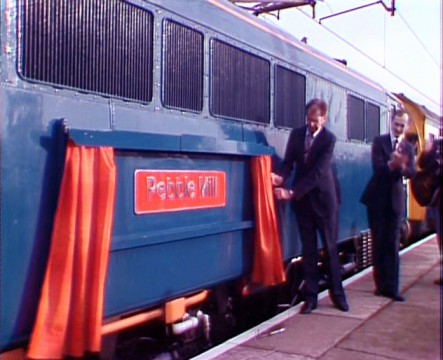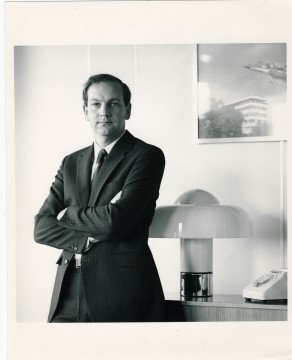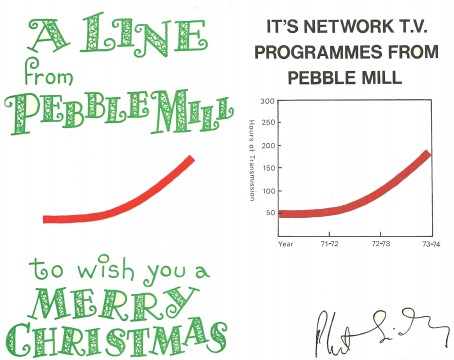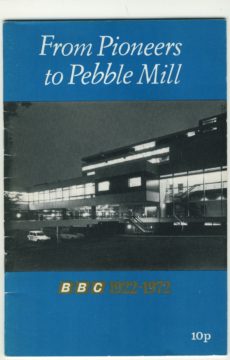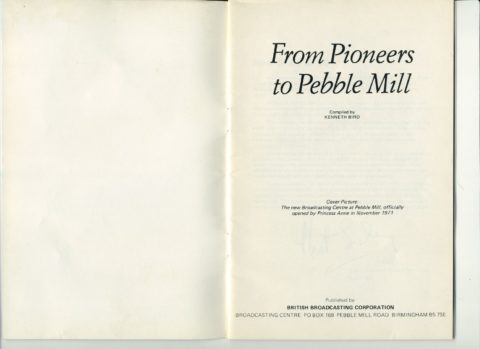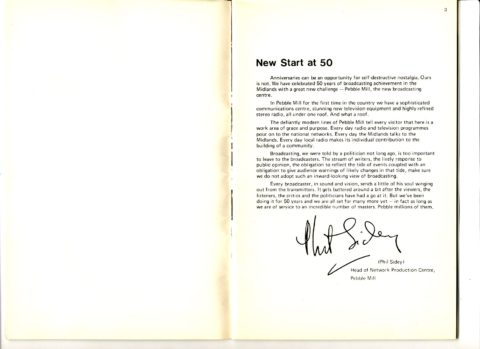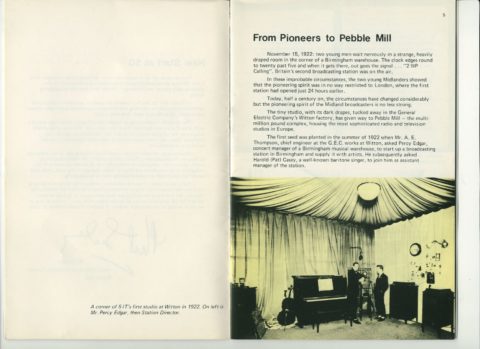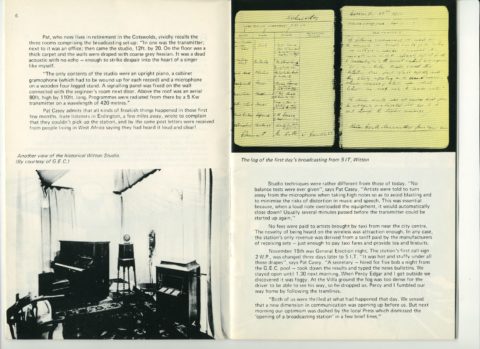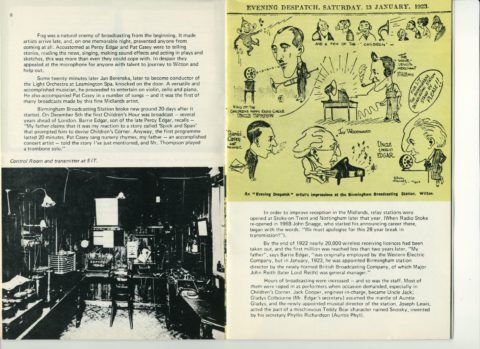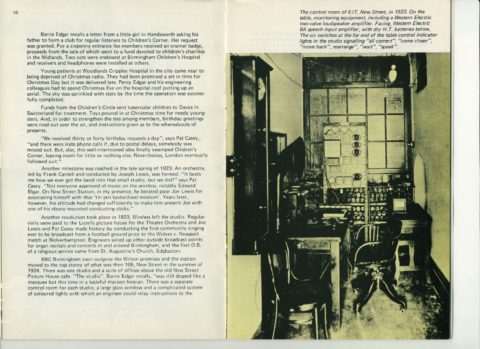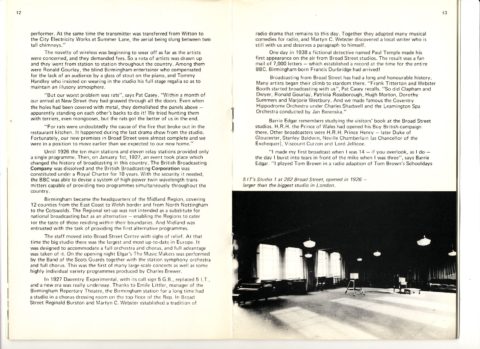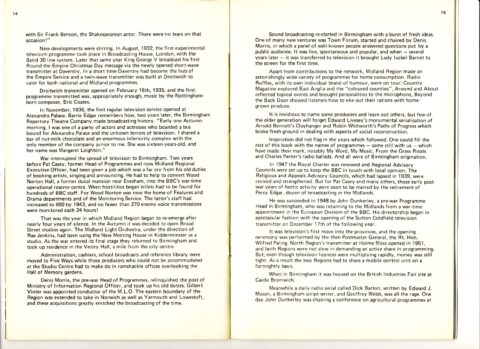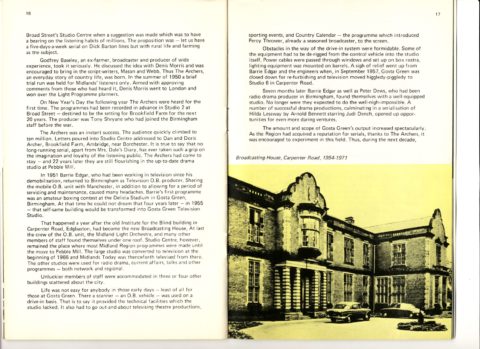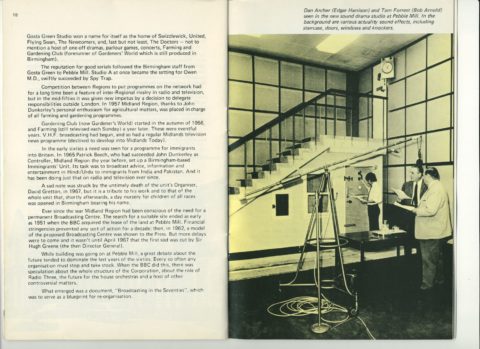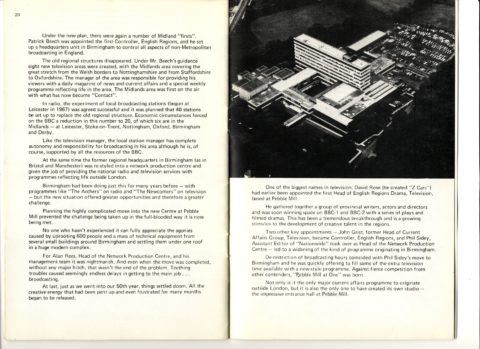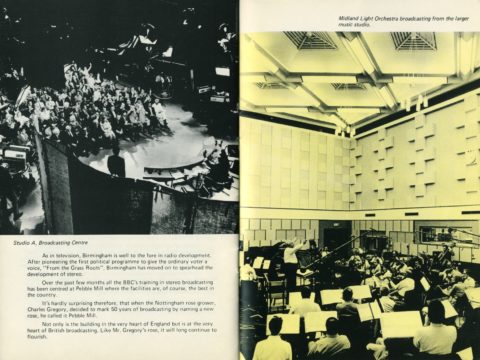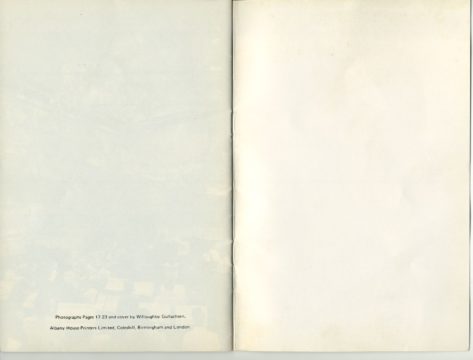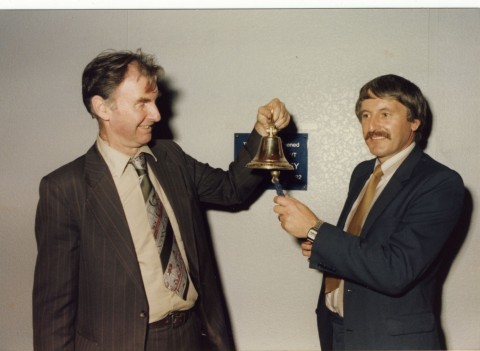Copyright resides with the original holders, no reproduction without permission.
The first photo is of the Pebble Mill locomotive sign (in final black and silver colours –after Virgin repainted it in 1998). It was an electric locomotive, Class 86, number 86256. The locomotive was originally a British Rail one, before becoming a Virgin one after the privatisation of the railways. It was taken out of service in 2002 and was finally scrapped in 2006.
The other photo is a screen grab of the actual naming ceremony in Nov 1981, Phil Sidey, Head of Pebble Mill, is pulling the string.
I understand that this sign with ‘BBC Pebble Mill’ was meant to be used on the train, but the powers that be didn’t want BBC on it, so it was never used. It is currently being listed for sale on ebay.
This link includes some photos of the Pebble Mill locomotive in service.
http://flickrhivemind.net/Tags/86256/Interesting
This YouTube video is Birmingham to London in 5 mins. At 1.21 in the train stops at Birmingham International and you can see it is “Pebble Mill”: it was made by Ewan Kiel from Midlands Region.
http://www.youtube.com/watch?v=vv640aRwFS8
Stuart Gandy left the following comment on the Facebook page: ‘I remember travelling on a train pulled by this locomotive. It was in 1987 when I was going to London by train for a course. I distinctly remember waiting on Wolverhampton station for the London train to arrive, and when it did it was this one named Pebble Mill. How uncanny was that!’

